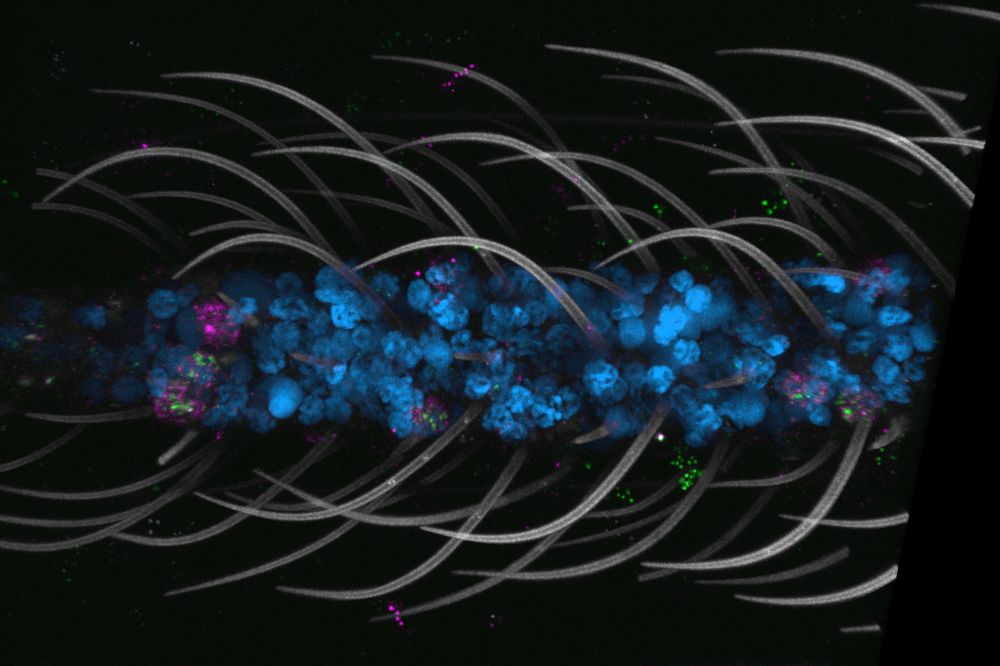
The most dangerous animal in the world just became a little easier to study—and perhaps one day, defeat. Researchers from Rockefeller University’s Laboratory of Neurogenetics and Behavior, in collaboration with mosquito experts worldwide, have unveiled the first-ever cellular atlas of the Aedes aegypti mosquito. Known for transmitting more diseases than any other mosquito species, this comprehensive Mosquito Cell Atlas offers cellular-level resolution of gene expression across every mosquito tissue, from antennae to legs. The dataset, published in the journal Cell, is freely accessible to researchers and the public.
“This is a comprehensive snapshot of what every cell in the mosquito is doing as far as expressing genes,” says Leslie Vosshall, head of the lab and a veteran researcher of the yellow fever mosquito for nearly two decades. “It’s a real achievement because we profiled so many different types of tissues in both males and females.”
Revolutionizing Mosquito Research
The Mosquito Cell Atlas has already provided fresh insights into the genetic intricacies of Aedes aegypti, unveiling novel cell types and revealing subtle differences—and unexpected similarities—between male and female mosquitoes. Notably, it has highlighted the dramatic genetic expression changes in the female mosquito brain post-blood feeding.
Senior author Nadav Shai, a scientist at both Vosshall’s lab and the Howard Hughes Medical Institute, anticipates that the atlas will be a springboard for new discoveries. “We believe this enormous dataset will really move mosquito biology forward,” he says. “It’s a great tool for vector biologists to take whatever interests them and just run with their own line of research.”
Organ by Organ: A Comprehensive Approach
In recent years, scientists have employed single-cell sequencing to map cell types and gene expression patterns in model organisms like the fruit fly, nematode, and mouse. Mosquito researchers have followed suit, albeit in a fragmented manner—organ by organ, tissue by tissue, across various studies. This atlas represents a significant leap forward, consolidating this fragmented research into a single, cohesive resource.
Most prior studies focused on female mosquitoes, given their role in disease transmission. “Both females and males feed on nectar in their day-to-day lives, but females need blood for protein to develop their eggs,” explains first author Olivia Goldman. Vosshall adds, “Because the female spreads all the pathogens, there is an enormous bias toward studying the female, leaving a gap in male biology.”
“We also wanted to bring mosquito cell biology up to date in a single resource using advanced and uniform sequencing technology,” Shai says.
To achieve this, the team utilized single-nucleus RNA sequencing (snRNA-seq), capturing the biology of all insect cell types more effectively than single-cell approaches. This resulted in a dataset of over 367,000 nuclei from 19 mosquito tissue types, categorized into five biological themes: major body segments, sensation and host seeking, viral infection, reproduction, and the central nervous system.
Uncovering the Secrets of Sensory Neurons
The researchers identified 69 cell types grouped into 14 major categories, many previously unknown. Among the most striking findings was the prevalence of polymodal sensory neurons—cells capable of detecting a wide array of environmental cues, including temperature and taste. These neurons, previously identified in the antennae and maxillary palps, were found throughout the mosquito’s body, including the legs.
“Just like the antennae and maxillary palps, the legs and mouth parts have powerful tools for sensing the world,” Shai explains. “Together, they enable mosquitoes to excel at seeking hosts, feeding, and reproducing.”
“Being able to taste sweetness with their legs may be useful for detecting sugars, which both females and males need to live,” Shai notes.
This sensory capability aids mosquitoes in identifying potential sugar sources, human hosts, and suitable water bodies for laying eggs. The combination of these sensors is crucial for their survival.
Behavioral Shifts Post-Feeding
After feeding, female mosquitoes lose interest in humans, focusing instead on egg development. “How does this incredibly strong drive to bite people get turned off?” Vosshall wonders.
To explore this, the team examined gene expression in female mosquito brains at various intervals post-feeding. They discovered dramatic changes in gene expression, peaking shortly after feeding and gradually decreasing. Surprisingly, these changes occurred primarily in glia—support cells comprising less than 10% of mosquito brain cells—rather than neurons.
“The glia are completely rewired during this time when the females lose interest in people,” Vosshall says.
Limited Sexual Dimorphism
Despite documented morphological and behavioral differences between male and female mosquitoes, their cellular makeup is largely similar, aside from small clusters of sex-specific cells and reproductive organs.
“We were kind of expecting it to be a tale of two genomes, but that’s not what we found,” Vosshall remarks.
One notable exception was a small group of cells in the male antenna, marked by a gene not expressed in females. Their function remains unknown, highlighting the potential for future research.
Future Directions and Global Impact
The Vosshall lab plans to further explore mosquito behavior, particularly host seeking and environmental sensing, using the single-cell atlas. “Different people in the lab are going to take it to different places,” Shai says.
The dataset’s size opens new research avenues previously inaccessible due to the lack of such a comprehensive tool. “This is a global resource that has been open to everyone since the very inception of the project in 2021,” Vosshall adds. “We’re excited to see the discoveries that will come from it.”





